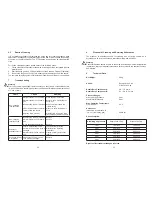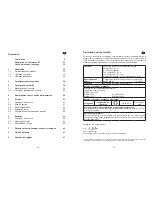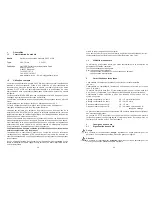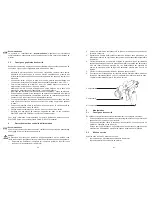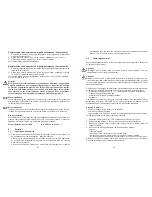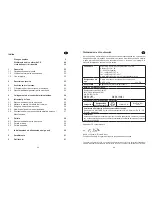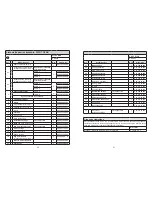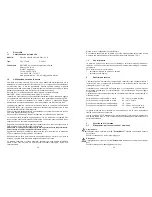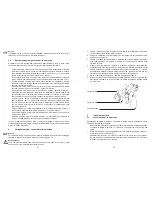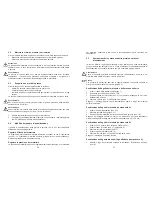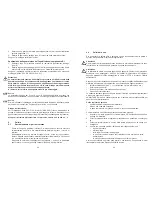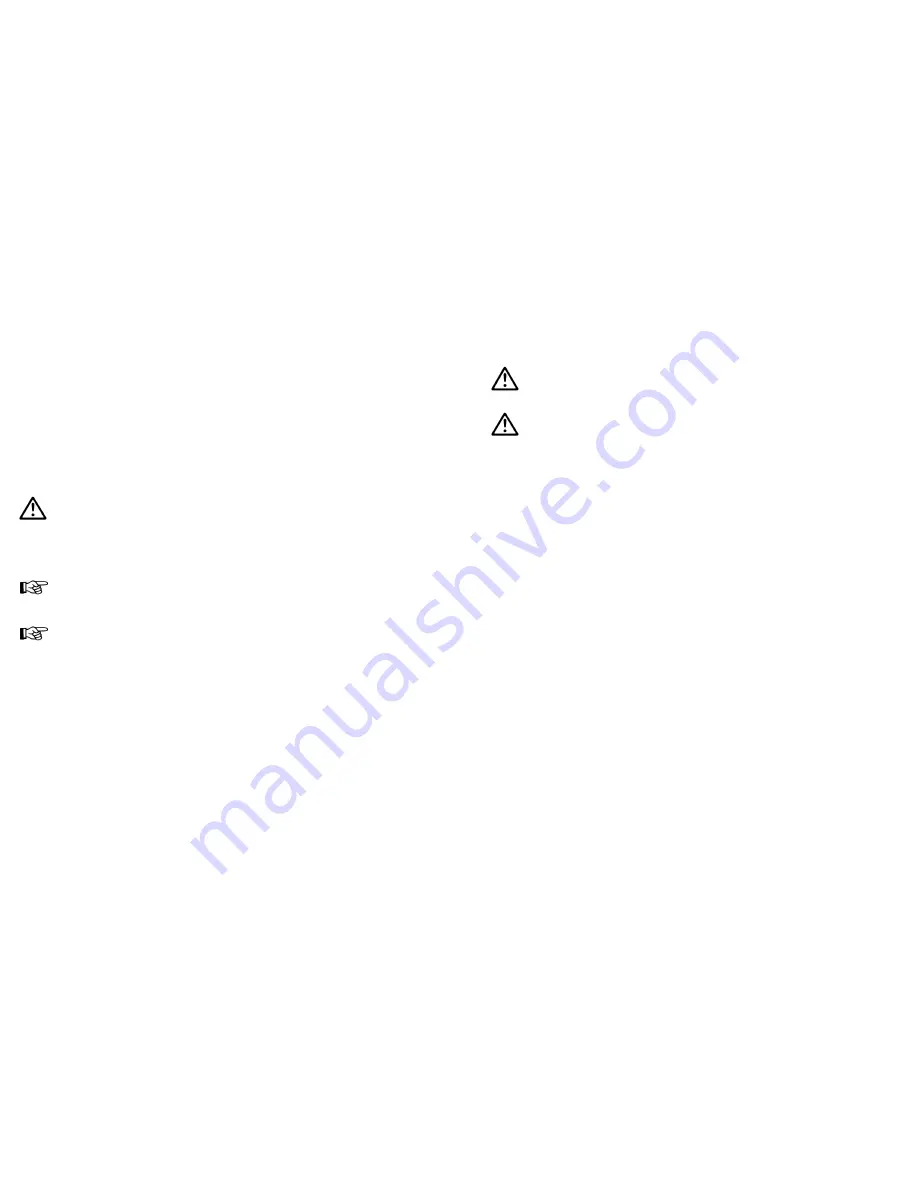
31
30
Replacement of Defective Needle Packings (Component A)
1. Remove the material needle as described in "Replacement of Material Needle
(Component A)".
2. Unscrew the needle packing gland (Item 32) from the gun body (width over flats
11).
3. Remove the needle packing (Item 31) from the gun body.
Reassembly of replacement parts is performed in reverse order.
Replacement of Defective Needle Packings (Component B)
1. Remove the material needle as described in "Replacement of Material Needle
(Component B)".
2. Remove the needle seal packing (Items 12) from the gun body. Use a strong wire
with one end bent to form a small hook.
Installation is performed in reverse order. You may use installation tool
V 24 531 90 000 (Pos. 41).
Attention
Because of the highly aggressive nature of the activator a leak in the needle
seal packing of component B will damage and destroy the gun body. Therefore
the packing (Item 12) should be replaced at least every 500 operating hours or
earlier. If the gun is not used for a longer period, it should be depressurised.
An assembly tool kit is available on request.
Note
The needle seal packings for component A and B which have been removed from the
gun body should not be re-used, since the sealing properties may be impaired
Note
Prior to assembly all moveable and sliding parts should be lubricated with a
non-acidic, non-resinogenic grease.
Repair Kits:
A WALTHER PILOT repair kit is available for the spray gun PILOT III 2-K which com-
prises all wearing pars.
Wearing parts are also shown (in boldface) in the Listing of
Replacement Parts.
Repair Kit - air side and material side:
No. V 16 024 00 . . 3
6 Cleaning
6.1
Safety Warnings
• Prior to any service work all air and material inputs should be shut off - risk of
injury.
• Open fires, naked lights and smoking are prohibited in the working area. There is
an increased risk of fire and explosion, when spraying readily flammable media,
such as cleaning solutions.
• Follow the safety instructions issued by the manufacturer of the cleaning media.
Aggressive and caustic cleaning agents in particular represent health hazards.
6.2
General Cleaning Procedure
The spray gun should be frequently cleaned and lubricated to ensure reliable
operation and long life.
Attention
Never immerse the spray gun in solvents or other cleaning fluids as this will impair
the functional reliability and efficiency of the gun.
Attention
Do not use any hard or sharp-pointed objects when cleaning the spray gun, as the
precision-made parts can easily be damaged and are likely to affect your spraying
results. The PTFE-coating may be damaged as well, reducing the non-stick effect.
Only use cleaning solutions recommended by the manufacturer of the spraying
material. These solutions should not contain any of the following constituents:
•
halogenated hydrocarbons (e.g. 1,1,1-trichloroethane, methylene chloride etc.).
•
acids and acidic cleaning solutions.
•
regenerated solvents (so-called cleaning dilutions).
•
paint removers.
These constituents cause chemical reactions with electroplated components resulting
in corrosion damage. WALTHER Spritz- und Lackiersysteme is not liable for any
damages resulting from improper treatment of the gun.
The spray gun should be cleaned
•
prior to every change of the spraying medium
•
at least once a week
•
as often as necessary because of the spraying medium used and the resulting
level of soiling.
The above cleaning measure are designed to maintain the functional efficiency of the
gun.
Following these recommendations will ensure safe spray gun operation and
performance.
1. Dismantle the gun as described in section
5.5 Retooling the Spray Gun
.
2. Clean the air cap and nozzle with a brush dipped in the recommended cleaning
solution.
3. Clean the gun body and all remaining parts with a soft cloth and the recommen-
ded cleaning solution.
4. Apply a thin layer of grease to the following parts:
•
material needle.
•
needle spring.
•
all sliding parts and bearings.
•
The moveable inner parts should be greased at least once a week.
•
The springs should at all times be coated with a thin layer of grease.
Use non-acidic, non-resinogenic grease and a brush. The spray gun is then
re-assembled in reverse order.
















